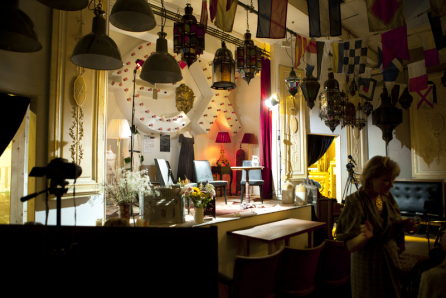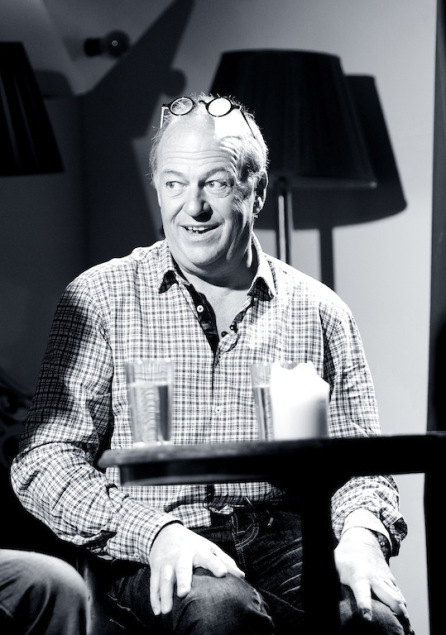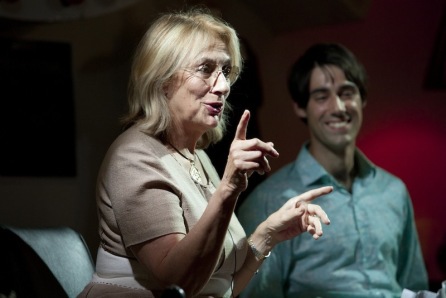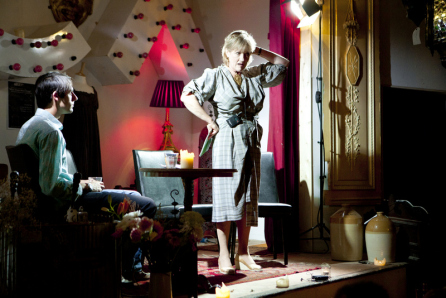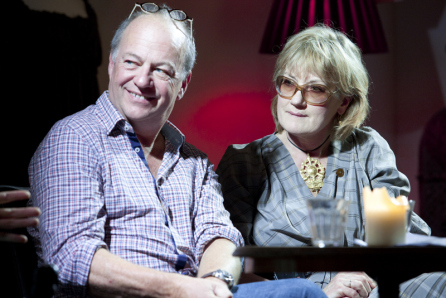Recipes For Success
Marco Pierre White (Godfather of Modern Cooking)
Niamh Shields (Eat Like a Girl)
Daren Spence (Co-founder of We Are Tea)
Simon Prockter (Co-founder of Housebites)
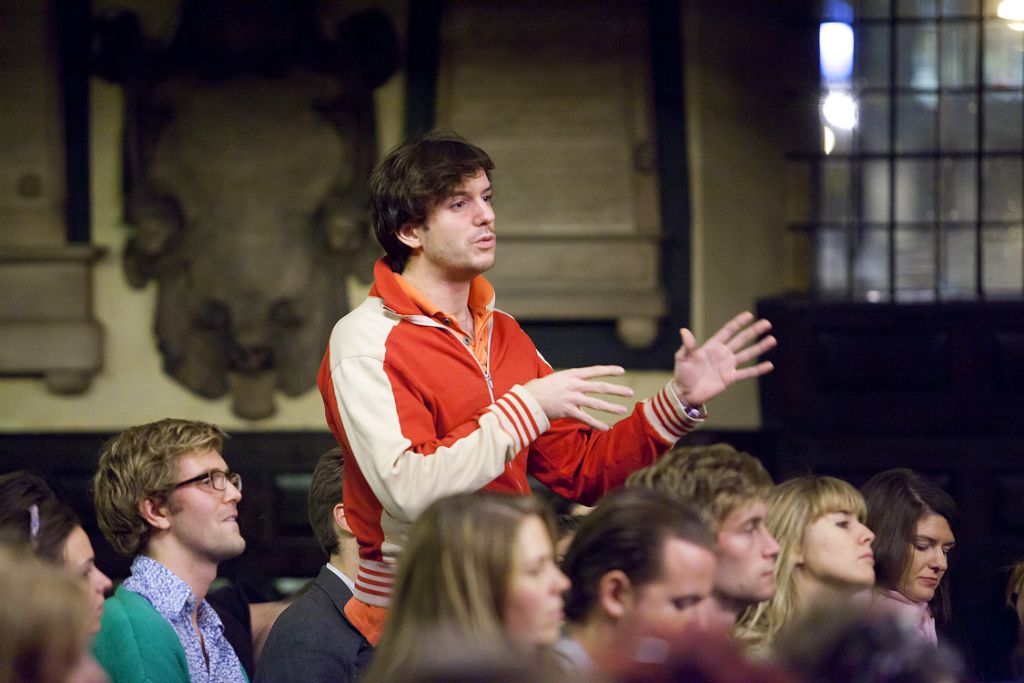 I never know what to expect of our evenings. Last night's talks with WEXO about “Recipes for Success” were no exception: four passionate professionals from different corners of the food world gathered in a Palladian church by Centre Point, on the first true autumn evening of the year.
I never know what to expect of our evenings. Last night's talks with WEXO about “Recipes for Success” were no exception: four passionate professionals from different corners of the food world gathered in a Palladian church by Centre Point, on the first true autumn evening of the year.
Marco Pierre White was our headline act, and he, in particular, subverted our expectations. It began when we met him for lunch at his new pub, The Handsome Cab, when he held up his hand to illustrate opportunism. 'See this hand' he had said, 'You see it one way, but there are many ways to see it. You see a palm, I see four knuckles. You need awareness of mind to recognise your luck.'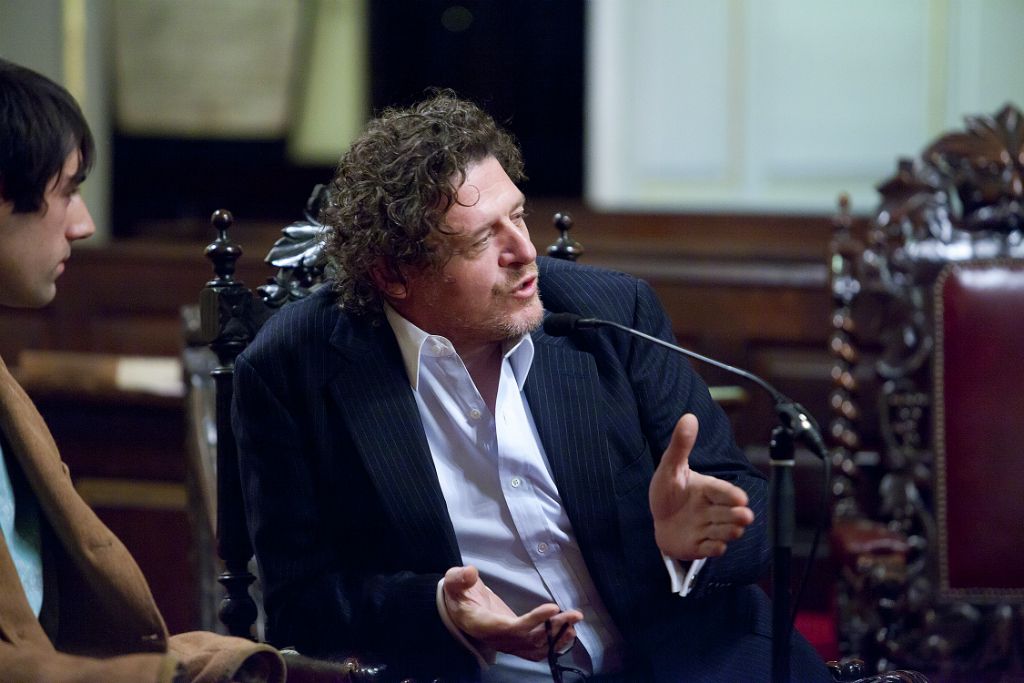
Marco knows how to tell a story. He leant in close to the microphone and spoke as if a mariner over a table in a pub, with deliberate, authoritative pauses; he took us from his dream of achieving three Michelin stars and five red knives and forks to the realisation of that dream, presenting his path as the upshot of many good twists of fate. He told how, by pure chance, he had come across Le Gavroche as he wandered through London after missing his bus. The next day he walked in cold, for an interview. Albert Roux took him on.
The audience devoured the touches which won The Oakroom five red knives and forks: 'The coins and notes in the till' – he said, pausing, measuring the beat with a characteristically slow, controlled gesture – 'had never been touched by human hands [...] If you were a lady (pause) and you had a bag...there was a little low table by your chair to put it on. We had them specially made.'
The moral? Recognise your luck, then strive for perfection and be gutsy as hell.
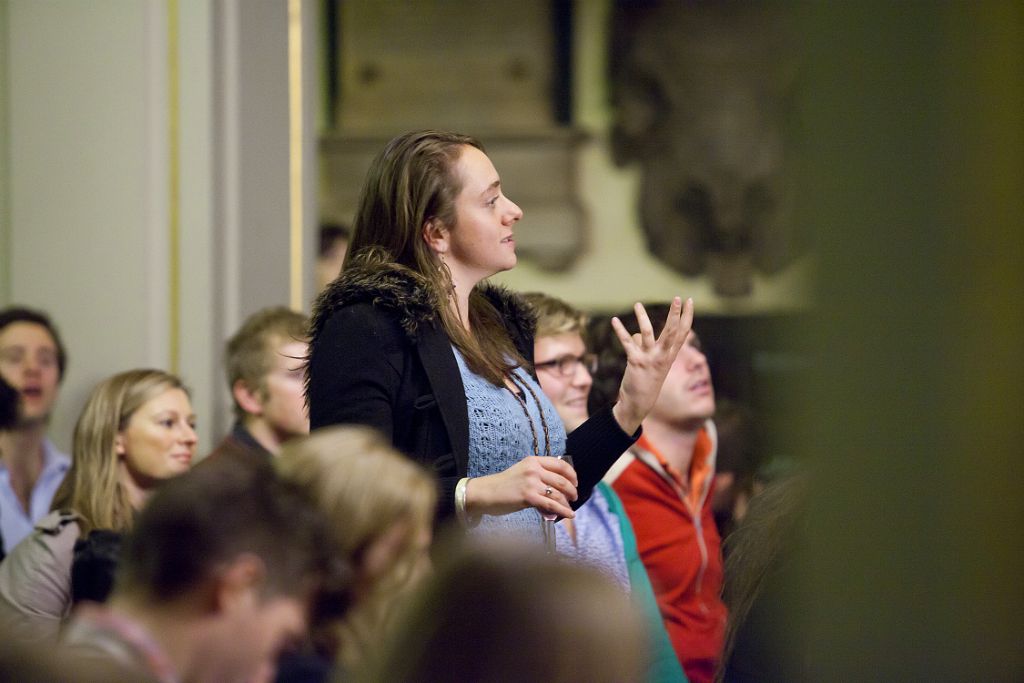
Niamh Shield's blog, with its vivid photography and affable tone, gives such a strong impression of her character that I felt I had met her before, possibly even clad in the same red tights. Indeed, she was every bit as affable in the flesh, totally at ease with the ad-hoc format and chatting willingly in her gentle Irish lilt.
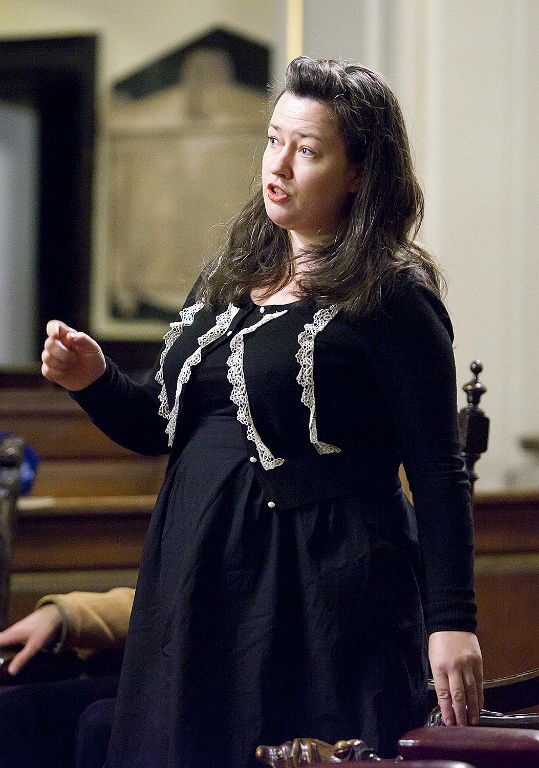 She began her blog after a foul day at work, and soon realised it was a natural progression: 'I'd always loved cooking food for friends, and sharing my recipes with them (too forcefully sometimes!), so with my blog, I just carried on doing that, except now I was sharing with an online community.' The spirit of the blog is to make recipes simple and accessible.
She began her blog after a foul day at work, and soon realised it was a natural progression: 'I'd always loved cooking food for friends, and sharing my recipes with them (too forcefully sometimes!), so with my blog, I just carried on doing that, except now I was sharing with an online community.' The spirit of the blog is to make recipes simple and accessible.
So why don't more people cook at home, I asked. It is partly a matter of education: 'Children aren't taught to cook in school any more' she complained. 'They're taught English and Maths and History, but not how to prepare food.'
We need to re-acquaint ourselves with the joy of preparation. While TV chefs are good for food on one level, Niamh worried that they might be part of 'a culture of watching other people prepare food'.
To re-discover the joy of preparation, I suggest Eat Like a Girl as a first port of call.
Daren Spence, the co-founder of We Are Tea, 'really, really, really LOVES tea'. He hardly had to say it, such was his dynamic delivery. Would-be entrepreneurs are often advised to begin with a problem, and Spence had delineated his very clearly: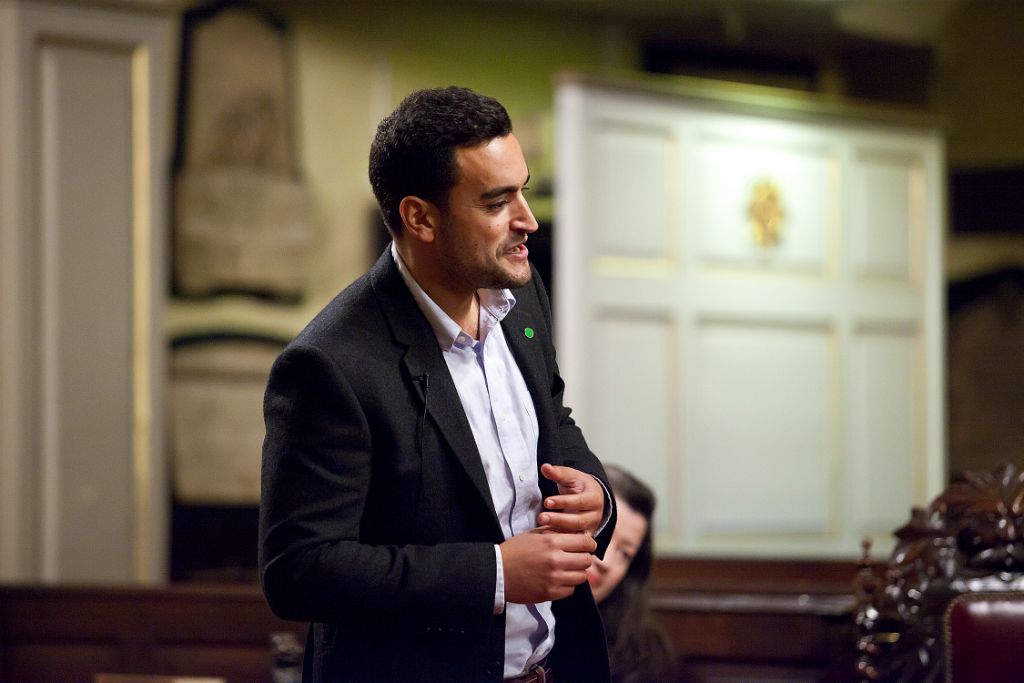
'Tea had been forgotten. There was an influx – well, I mean an invasion – of the American-style coffee shop. My colleagues were returning to the office with more and more vulgar coffee-based drinks, with sprinkles on top and cream on the top - it was like watching someone going to the cinema with a pop-corn bucket. And all I could get was a tepid cup of crumby tea in a polystyrene cup. I felt left out. I wanted to be part of their gang […] And I was frustrated that the tea industry was just sitting there, resting on its 350-year-old laurels, not doing anything about it.'
Well, Spence isn't sitting around, and We Are Tea are fighting the tea battle, winning Great Taste Awards ('The Oscars of fine food') and supplying such humble outfits asHarrods and Harvey Nichols.
Simon Prockter has just launched one of the most innovative things in food. He is co-founder of Housebites, 'gourmet take-away, delivered to your door, cooked by a local, top chef.' (an alternative to pizzas which taste like the boxes they came in). So, which niggling frustrations engendered this great idea?
'When you think of take-away, do you think of it as a great experience? Do you know who is cooking your meal? [...] Wouldn't it be great if you could see your chef on the high street, and say “Hey, that's my chef, you cooked me a great meal the other day!” And that really doesn't happen.' Well, for what it's worth a big thank you to the Housebites chef Andy Oliver (masterchef finalist), who prepared those delicious nibbles for the interval. 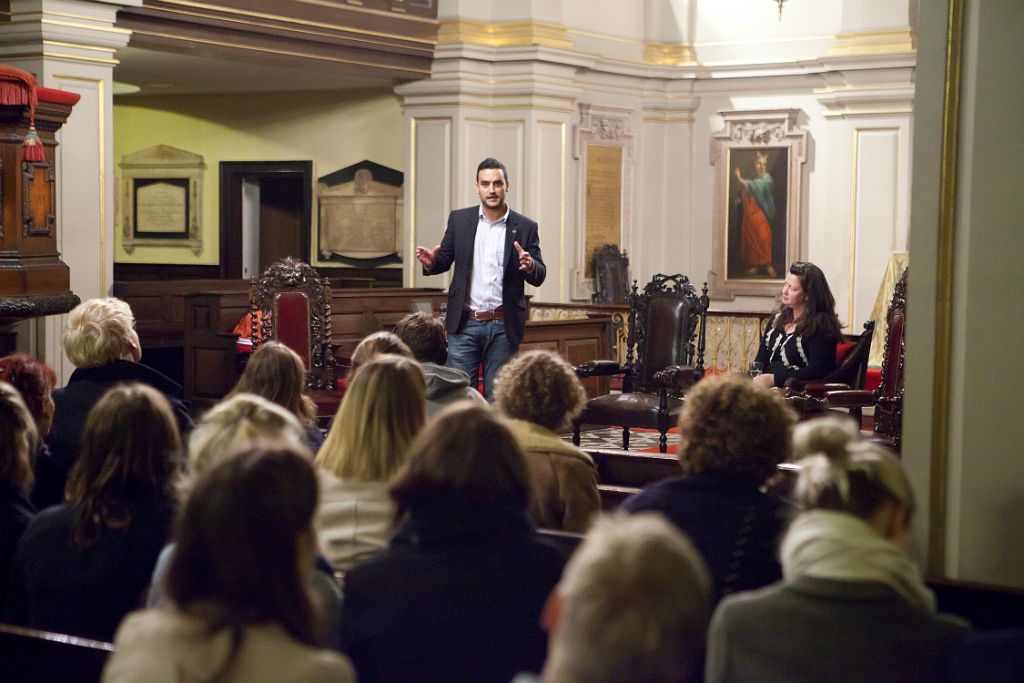

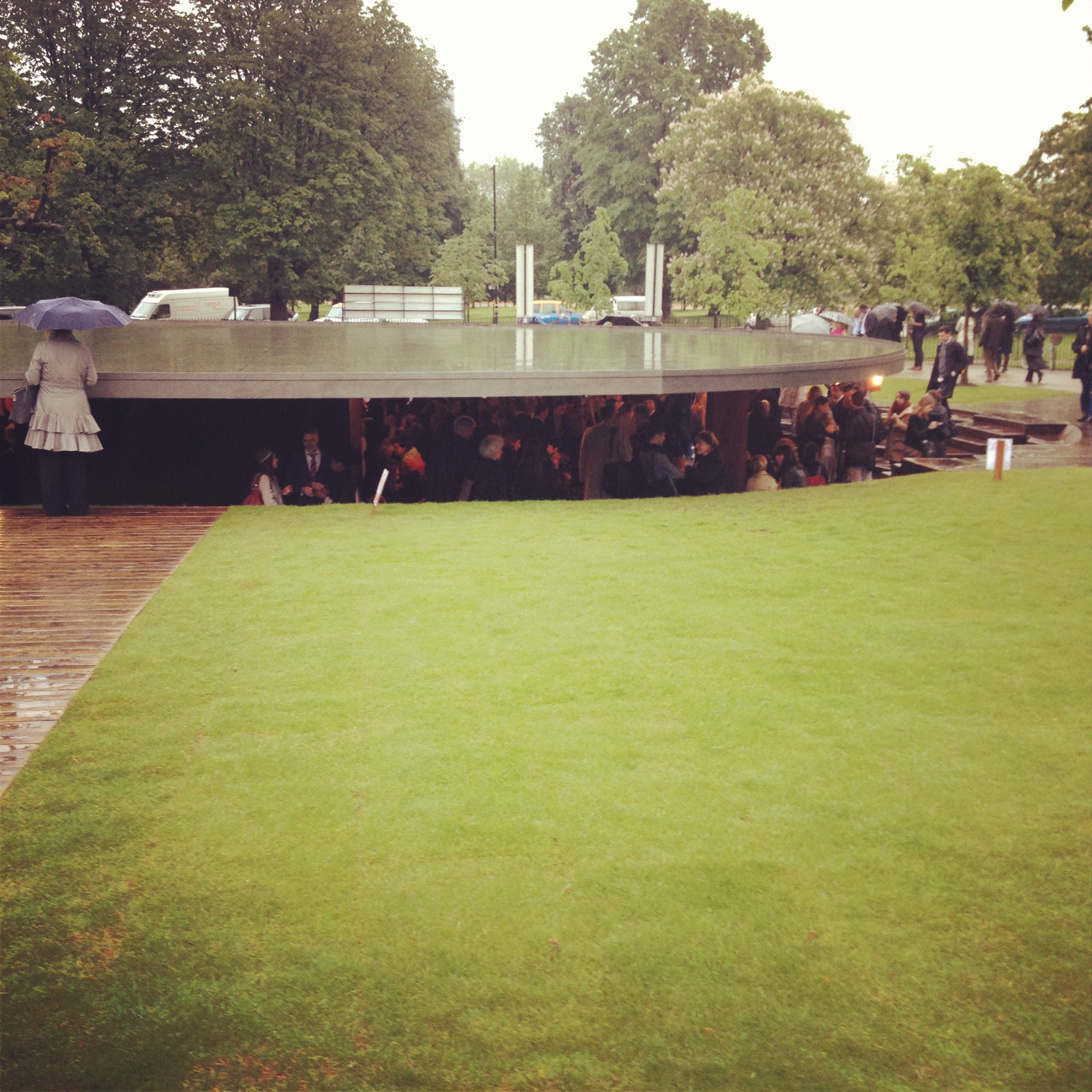
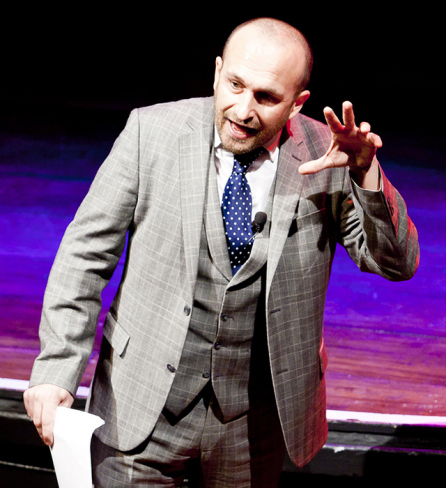

 Email Article
Email Article 